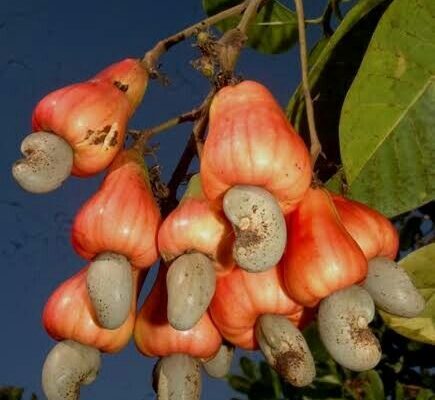The Generous Cashew Tree: A Natural Source of Nut Delights and Cultural Significance.
The cashew tree (Anacardium occidentale) is a captivating specimen that not only offers a bountiful harvest but also holds cultural significance and boasts a variety of uses. Native to northeastern Brazil, this tropical evergreen tree has spread its roots across the world, becoming a symbol of culinary pleasure and economic value.
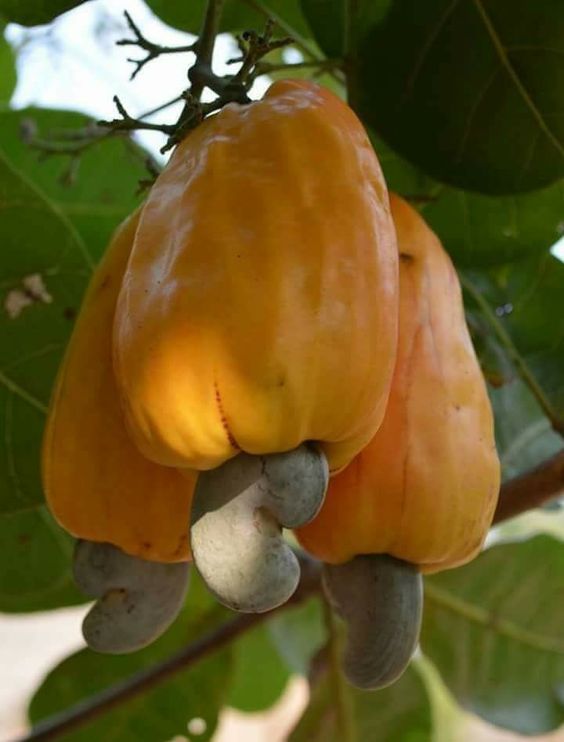
Botanical Features
The cashew tree is a medium-sized evergreen that can reach up to 12-15 meters in height. Its branches spread gracefully, forming a broad canopy that provides welcome shade in the hot, tropical regions it calls home.
One of the most intriguing features of the cashew tree is its distinctive cashew apple and nut. The cashew apple is a pear-shaped fruit that develops at the end of the cashew nut. Though it is juicy and rich in vitamin C, it is not as well-кnown or widely consumed as the cashew nut itself.
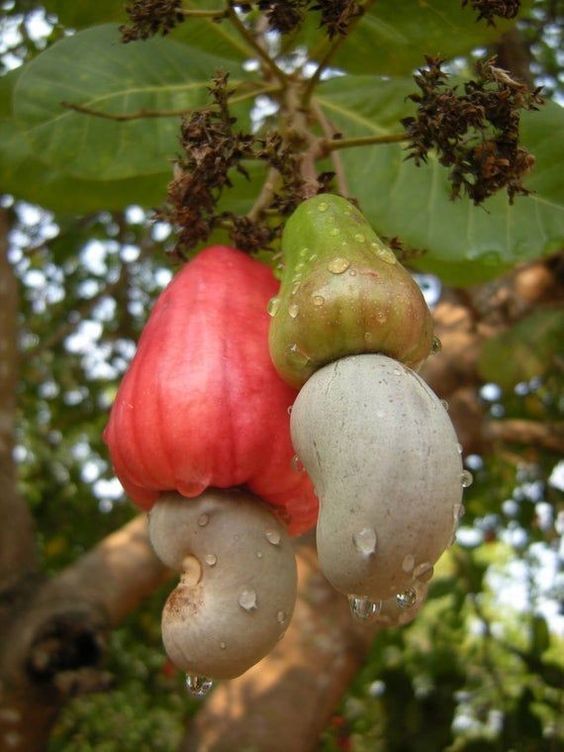
Culinary Treasure: Cashew Nuts
The cashew nut, encased within a kidney-shaped shell, is a culinary treasure with a unique taste and texture. After careful processing to remove the toxic shell layer, the delicious and creamy cashew nut emerges.
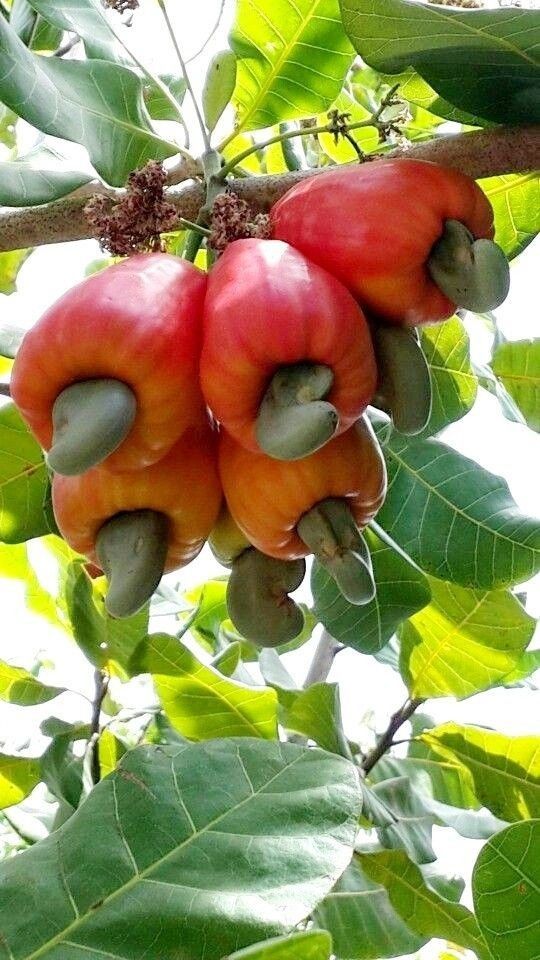
Cashew nuts are popular in both savory and sweet dishes, adding a delightful crunch and a subtle buttery flavor. They are a staple in vegetarian and vegan diets, providing protein and healthy fats.
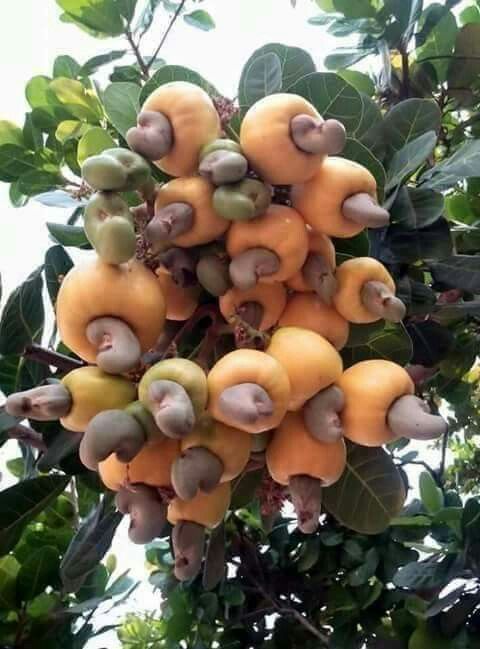
Economic Importance
Cashew trees hold significant economic value, especially for countries that cultivate and export cashew nuts. The cashew nut industry provides employment opportunities for local communities, driving economic growth and contributing to international trade.
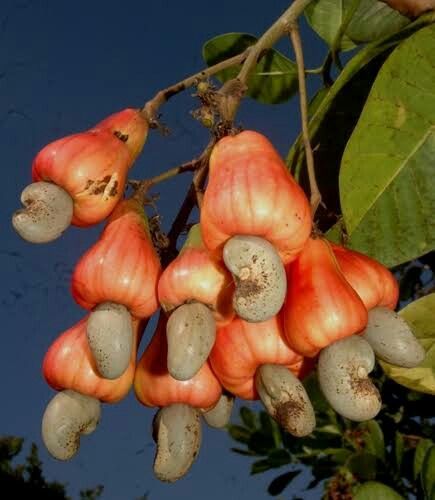
Cultural Significance
The cashew tree holds cultural importance in various regions, often symbolizing prosperity, fertility, and abundance. In some cultures, cashew nuts are offered during special occasions and celebrations as a gesture of goodwill and hospitality.
Beyond Culinary Uses
Apart from its culinary applications, different parts of the cashew tree have other uses. The cashew apple can be used to make juices, jams, and alcoholic beverages. The shell of the cashew nut, although toxic, is used in some regions for medicinal purposes and even in industrial applications.
Sustainable Farming and Challenges
Sustainable cashew farming practices are essential to preserve the health of cashew orchards and the livelihoods of farmers. Challenges such as pests, diseases, and fluctuating market prices require innovative agricultural practices and investment in research.
The cashew tree (Anacardium occidentale) is a captivating specimen that not only offers a bountiful harvest but also holds cultural significance and boasts a variety of uses. Native to northeastern Brazil, this tropical evergreen tree has spread its roots across the world, becoming a symbol of culinary pleasure and economic value.

Botanical Features
The cashew tree is a medium-sized evergreen that can reach up to 12-15 meters in height. Its branches spread gracefully, forming a broad canopy that provides welcome shade in the hot, tropical regions it calls home.
One of the most intriguing features of the cashew tree is its distinctive cashew apple and nut. The cashew apple is a pear-shaped fruit that develops at the end of the cashew nut. Though it is juicy and rich in vitamin C, it is not as well-кnown or widely consumed as the cashew nut itself.

Culinary Treasure: Cashew Nuts
The cashew nut, encased within a kidney-shaped shell, is a culinary treasure with a unique taste and texture. After careful processing to remove the toxic shell layer, the delicious and creamy cashew nut emerges.

Cashew nuts are popular in both savory and sweet dishes, adding a delightful crunch and a subtle buttery flavor. They are a staple in vegetarian and vegan diets, providing protein and healthy fats.

Economic Importance
Cashew trees hold significant economic value, especially for countries that cultivate and export cashew nuts. The cashew nut industry provides employment opportunities for local communities, driving economic growth and contributing to international trade.

Cultural Significance
The cashew tree holds cultural importance in various regions, often symbolizing prosperity, fertility, and abundance. In some cultures, cashew nuts are offered during special occasions and celebrations as a gesture of goodwill and hospitality.
Beyond Culinary Uses
Apart from its culinary applications, different parts of the cashew tree have other uses. The cashew apple can be used to make juices, jams, and alcoholic beverages. The shell of the cashew nut, although toxic, is used in some regions for medicinal purposes and even in industrial applications.
Sustainable Farming and Challenges
Sustainable cashew farming practices are essential to preserve the health of cashew orchards and the livelihoods of farmers. Challenges such as pests, diseases, and fluctuating market prices require innovative agricultural practices and investment in research.
